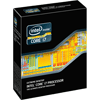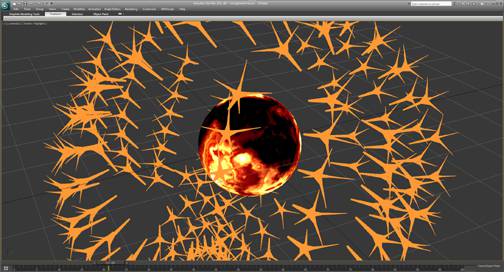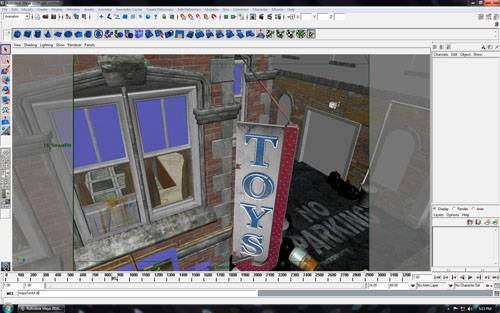- Qualcomm Launches Snapdragon 4 Gen 2 Mobile Platform
- AMD Launches Ryzen PRO 7000 Series Mobile & Desktop Platform
- Intel Launches Sleek Single-Slot Arc Pro A60 Workstation Graphics Card
- NVIDIA Announces Latest Ada Lovelace Additions: GeForce RTX 4060 Ti & RTX 4060
- Maxon Redshift With AMD Radeon GPU Rendering Support Now Available
Intel Core i7-3960X Extreme Edition Review

To those looking to build the biggest, baddest high-end PC around, the wait for Sandy Bridge-E was no doubt painful. But, it’s finally here, and much to our expectations, Intel has once again solidified its position as the performance leader. So let’s take a look at what it offers, and compare it to the i7-990X, i7-2600K and AMD FX-8150.
Page 4 – Workstation: Autodesk 3ds Max 2011 & Maya 2009
If there’s design work that needs to be done, then Autodesk is sure to have the right tool. From 3D modeling to architectural design, Autodesk’s selection of highly-regarded tools is almost mind-numbing, and because both its 3ds Max and Maya applications have long been considered to be some of the best in their respective class, we opt to use them for our benchmarking here.
For the sake of all-around testing, we perform most of our testing on this page with the help of SPEC’s SPECapc 3ds Max 2011 and SPECapc Maya 2009 (run on Maya 2010), although we also render an in-depth model/scene in the former. We’ll explain each benchmark as we go along.
SPECapc 3ds Max 2011
We kick off our testing with one of the most comprehensive benchmarks in our test suite: SPECapc 3ds Max 2011. The overarching goal of those responsible for producing SPEC’s benchmarks is to deliver as well-rounded a test suite as possible for a respective field, such as 3D rendering and modeling, to produce accurate results that those responsible for purchasing hardware can take advantage of.
Designed to utilize both the CPU and GPU, SPECapc 3ds Max 2011 comes in both free and professional flavors, with the latter being the version we use. It’s comprised of 58 individual tests and takes about 6 hours to complete on a machine equipped with 12GB of RAM and a six-core Intel Core i7-990X.


There’s no better way to start our results than with some that are utterly confusing, is there? It was expected that the Core i7-3960X would dominate the charts here, but instead, it was the previous-generation Core i7-990X that came out ahead overall thanks to its impressive ‘Large Model Composite’ result – one that was stable across two full suite runs.
Singling out the CPU performance itself, the i7-3960X did in fact come ahead, but we’ll be re-running the test soon to see if we can’t get down to the bottom of these results. Here, the i7-990X performs much better in the GPU test, but this is the only such test where that’s the case. Even after pinging Intel with these odd results, we’re left without an answer, so let’s see how the rest of the results shape up.
Autodesk 3ds Max 2011 – “Naomi” Render
For our second 3ds Max 2011 test, we render a scene commissioned from Bulgarian artist Nikola Bechev, entitled “Naomi: The Black Pearl”. The woman is comprised of over 7,000 polys with the entire scene totaling just over 106,000 vertices. Three light sources are used, with the entire scene being enhanced with HDR and ray tracing techniques, and subsurface scattering applied to certain objects. The scene is rendered at 1800×3600 as a production release, with HQ detail levels being used all-around.

While the SPECapc results above created a bit of confusion, the results from our model render delivered expected results. Here, the i7-3960X proves just over 10% faster than the i7-990X. The i7-2600K sits a fair bit back entirely thanks to its number of cores.
SPECapc Maya 2009
Like its 3ds Max 2011 variant, SPECapc Maya 2009 is designed to stress various aspects of the tool, such as rendering with standard and HQ methods, working in wireframe mode and so forth across numerous models and one overarching scene titled “Toy Store”. While SPECapc 3ds Max 2011 produces results related to both the CPU and GPU, SPEC Maya 2009 also takes I/O into account.
As Autodesk’s Maya 2010 is the latest version of the program that’s compatible with SPECapc 2009, we have chosen to benchmark with that. SPEC has promised a new version of SPECapc Maya to be released within the next year, which we plan to readily update our test suite with once it becomes available.


Once again we’re left with an interesting result, as the i7-2600K performed better in each test when compared to the i7-3960X. Not by much, mind you, but it seems apparent why SPEC is interested in rolling out another SPECapc Maya as soon as possible. It’s apparent that raw frequency beats core count if the CPU has at least four cores.
On the next page, we’ll see if these trends continue with two synthetic tests that are designed to take advantage of about as many cores as you can possibly throw at them.
Support our efforts! With ad revenue at an all-time low for written websites, we're relying more than ever on reader support to help us continue putting so much effort into this type of content. You can support us by becoming a Patron, or by using our Amazon shopping affiliate links listed through our articles. Thanks for your support!







